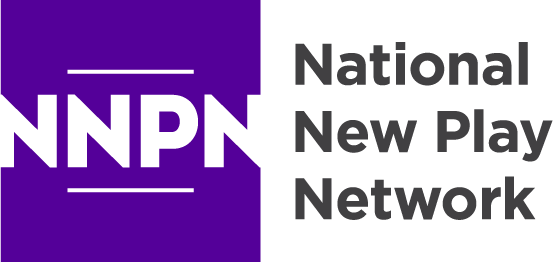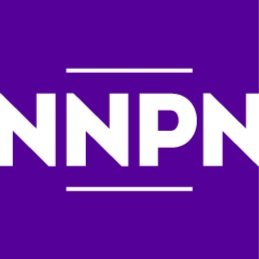Dock Walk 1
As I write to you from my desk, here on the traditional homelands of the Áak’w Kwáan Peoples on Tlingit Aani, colonially known as Juneau and Douglas, Alaska, I say hello to a bald eagle perched outside my window. I breathe and see the rainless skies beckon me to the docks for a walk.
I park and start at this end of the docks, where I always touch the railing with my foot to mark the beginning of my journey. I look over the edge and see the tide ebbing in and schools of Pacific herring dart below the docks in a sun reflecting flash escaping a gray seal in pursuit— my meditation has begun.
I look over my shoulder with a hypervigilance for safety as my mind flashes to the pandemics of escalating anti-Asian harassment/hate/violence, as unyielding anti-blackness violently takes more lives and mass shootings continue, and the relentless patterns of genocide replicate to allow Native/Indigenous Elders and their communities to die from Covid-19 at disproportionate rates (not their first inflicted pandemic) and the historical and contemporary traumas of settler colonialism continue to erase and feel inescapable.
I listen to the waves in the Gastineau Channel, and I notice the wood grain in the dock and the pattern of the wood slats that chart my path. Then I pray for peace and text with our Middle Eastern North Africa/Arab and South Asian theatre leaders to learn the status of their families, dead or alive from spikes in the pandemic in India, or bombing, in Israel and Gaza.
In my hypervigilance, I am obsessed with self-educating. I listen to audible books when I walk. Between work assignments I look at videos of keynote speakers and register for community conversations that feature our BIPOC elders.
It’s still Asian American/Pacific Islander (AAPI) Heritage Month and one of the most recent virtual AAPI events I attended was with two Japanese and one Black psychologist from the American Psychological Association hosted by the Japanese American Citizens League. Today, as I stride along, I find myself in deep contemplation with the wisdom of Japanese American elder and US WWII Concentration Camp survivor, Dr. Satsuki Ina, who has dedicated her career in psychology to collective trauma and community healing.
I look up and see an eagle soaring—full wingspan as it circles, and the winds carry it high above Tlingit Aani.
Dr. Ina speaks of trauma in different forms. She shares the word “fracturing” that refers to the impact of racism trauma and how it inhibits our expression of our true selves as we struggle with the constant internalized messaging of systemic dehumanization. Dr. Ina speaks of how it is important to learn this-- she has come to see what has happened to those held in the concentration camps and similarly those currently held in detention/imprisonment. She has been cited as writing about how, “…a cage is still a cage.”
I breathe in the most pristine air and gaze upward to see the eagle has moved on and I pause to look at the snowcapped mountains and listen to the rushing water falls. It is the Spring melt, where the sun now rises at 4:15am and sets at 9:33pm with complete darkness at approximately 10:33pm on Tlingit Aani— and it is not yet the longest day of the year.
Longer days mean more light on the subject as I recall Dr. Ina also reveals different forms of trauma. One form is of a single incident, such as a car accident—a collision with another car. It is disturbing and overwhelming, but it has a clear ending. It happens once.
Dr. Ina shares that her lived experience as a concentration camp survivor combined with ongoing research has illuminated the clearly racist US WWII governmental criteria for imprisonment of Japanese peoples regarding 1/16th blood quantum and its relationship to the historic and ongoing genocide, imprisonment/detainment and surveillance of Black and Brown peoples. Dr. Ina now names this as “the state of captivity trauma; a chronic state of trauma”. She is not only describing those currently held in captivity but those of us navigating the social normative of racism as a form of captivity trauma, “…where it is so pervasive, there is no escaping it…the supremacy of whiteness has been embroidered into almost every aspect of our lives….” Dr. Ina continues and talks about the constant messaging, narrative, the way the major structures have been organized to dehumanize and how it continues to replicate itself. It is a brainwashing it is so pervasive.
In a recent article that Dr. Ina wrote, she cites an elder, a Japanese American camp survivor, as sharing, “…how can I get out of camp.” The internalized “camp” and the external physical reality of being held captive in a racist society—which is more real now?
I reach the other end of the docks and I tap that railing with my foot to mark my halfway point. I look over my shoulder again as I turn to head back. I see the long stretch I just walked and notice pre-covid the spring and summer would have seven to nine cruise ships docked and millions of tourists visiting on Tlingit Aani. I am relieved to have this solitude as my mind turns to…
Captivity trauma and an NNPN Op-Ed on decolonizing theatre. I have so many questions—Do I try to make a list to share our actions? This was not a mere list. It was hours and days of learning and checking consciousness and making corrections, better choices and growing empathy and humility and staving off defensiveness for the joy of collaboration and creativity. Dr. Ina circles back into my meditation and she teaches me to consider finding new words and concepts, as a Japanese American healing from intergenerational/captivity trauma. Questions begin to surface, and I notice rain drops fall in the Channel and they ripple out like echoes of the past in this present moment…
How am I/you kept captive in the American Theatre…in my thinking and in our theatre systems and organizations and spaces?
Can I/we see that white supremacy culture is the enemy, not each other?
How am I/you to transform my/ourselves to heal from how we are fractured since held captive by the supremacy of whiteness and the normalized capitalism that it competitively and relentlessly generates?
How can I/you express who I/you truly am/are?
How am I/you holding captive the process of re-indigenizing?
Am I/are you impeding the progress of supporting the re-humanization of our Native/Indigenous, and our Black, Latinx, and Asian/Pacific Islander/Native/MENA colleagues/theatre makers? If so, how?
Am I/you ready to truly support their leadership and will I/you follow their lead?
How will I/you heal and take action to end the chronic captivity trauma of racism?
How am I/you kept captive in the American Theatre…in my thinking and in our theatre systems and organizations and spaces?
Dr. Ina ended her talk by sharing the wisdom of our dear Reverend Duncan Ryūken Williams, a Buddhist priest, who works with us at Tsuru For Solidarity. Reverend Williams shares about the process of healing our fractured communities and how it is like that of the Japanese art and craft of repairing broken ceramics. The broken pieces are bonded back together with gold lacquer. The gold lacquer bonds with each piece and each piece is valued. Bringing the pieces back together is in and of itself a treasure. We come from fracturing to unity to become whole again.
As I walk and I see the railing where I began, I wonder how and what I will share with you all who might read this article. I relax knowing that if I take you on my walk and share how I am reconnecting to the land first, my thoughts and right purpose will come to me.
I invite you to move outside near or with natural beauty surrounding you and to contemplate the questions I pose above.
Before I return with Part 2, I invite you to renew or continue to renew your relationship with the air, land, and water, the earth—for it is like gold lacquer.
I learn a pod of Orca whales just passed through the channel. Bears are awake, fireweed will soon blossom, and blueberries will ripen as the salmon run— preparations for harvesting have begun— its May. It’s Asian American/Pacific Islander Heritage Month. How will I honor and deepen my relationship to healing where I am fractured?
To learn more about Dr. Satsuki Ina and her work visit: www.satsukiina.com and www.tsuruforsolidarity.org
All photos courtesy of Leslie Ishii









